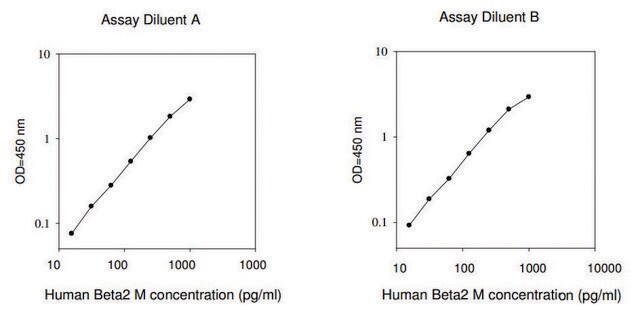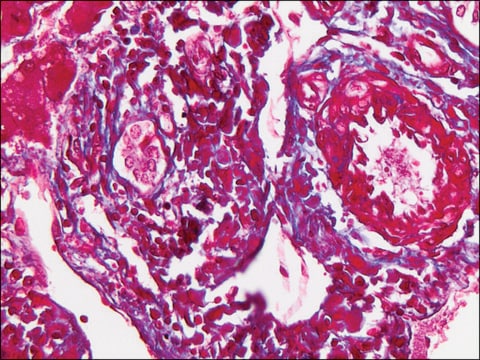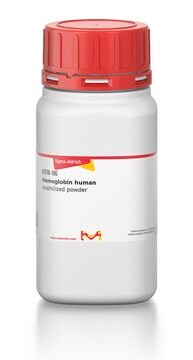SAE0112
β2-Microglobulin from human urine
≥98% (SDS-PAGE), solution
Sinónimos:
β2-Microglobulin from human urine
About This Item
Productos recomendados
origen biológico
human
Análisis
≥98% (SDS-PAGE)
formulario
solution
impurezas
Infectious Agents, tested
solubilidad
water: soluble
Nº de acceso UniProt
temp. de almacenamiento
2-8°C
Información sobre el gen
human ... B2M(567)
¿Está buscando productos similares? Visita Guía de comparación de productos
Descripción general
β2 microglobulin (β2-M) is a polypeptide that associates with the heavy chain of class I major histocompatibility complex (MHC) antigens on the cell surface. It is a non-glycosylated protein, synthesized by all nucleated cells. Its secondary structure comprises of seven β-strands, arranged into two β-sheets connected by a single disulfide bridge.
Aplicación
Acciones bioquímicas o fisiológicas
Nota de preparación
Código de clase de almacenamiento
12 - Non Combustible Liquids
Clase de riesgo para el agua (WGK)
WGK 1
Punto de inflamabilidad (°F)
Not applicable
Punto de inflamabilidad (°C)
Not applicable
Certificados de análisis (COA)
Busque Certificados de análisis (COA) introduciendo el número de lote del producto. Los números de lote se encuentran en la etiqueta del producto después de las palabras «Lot» o «Batch»
¿Ya tiene este producto?
Encuentre la documentación para los productos que ha comprado recientemente en la Biblioteca de documentos.
Nuestro equipo de científicos tiene experiencia en todas las áreas de investigación: Ciencias de la vida, Ciencia de los materiales, Síntesis química, Cromatografía, Analítica y muchas otras.
Póngase en contacto con el Servicio técnico






